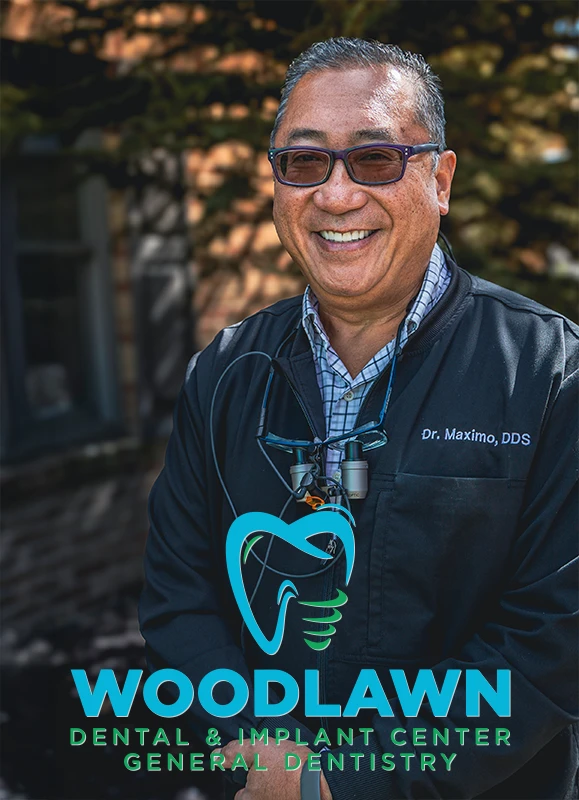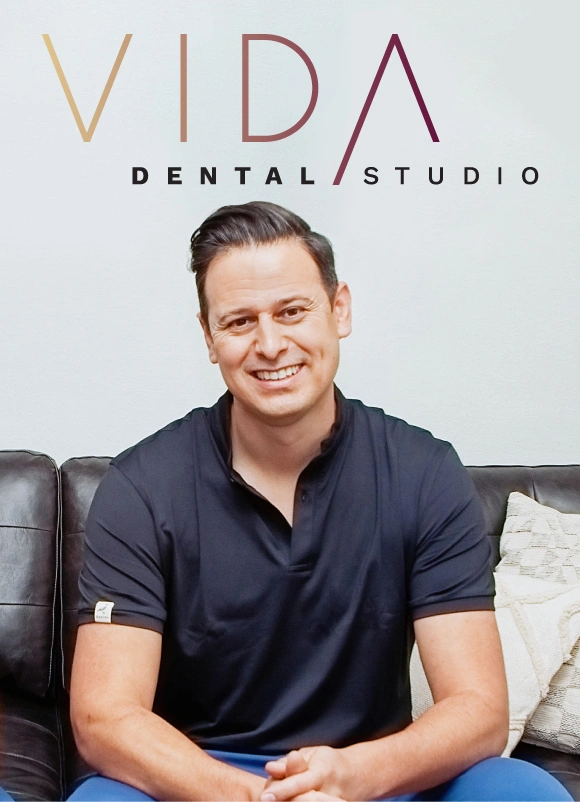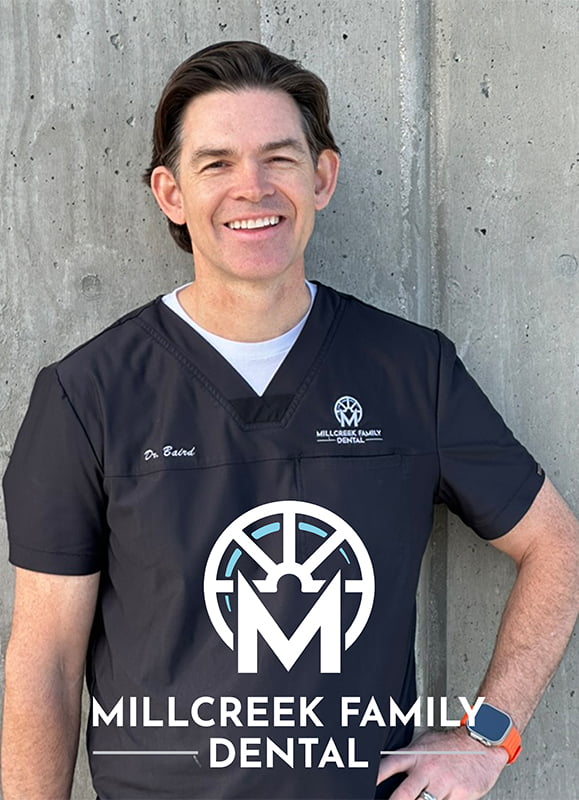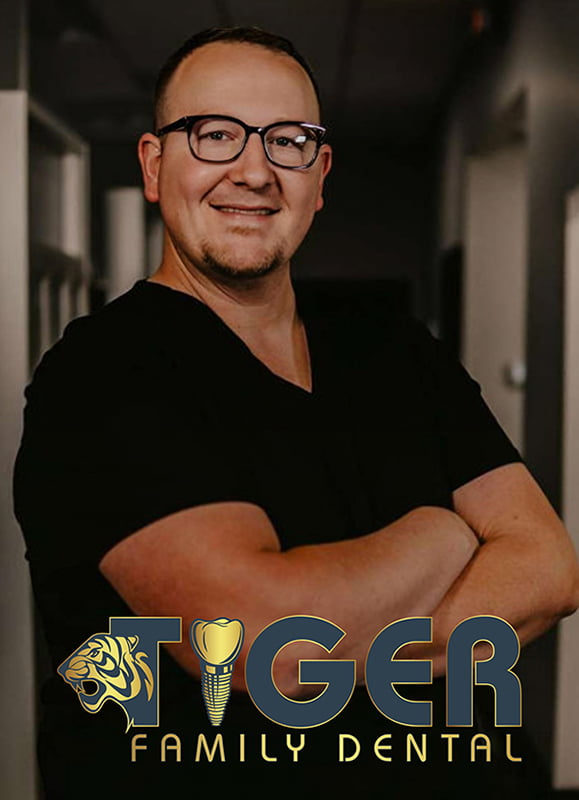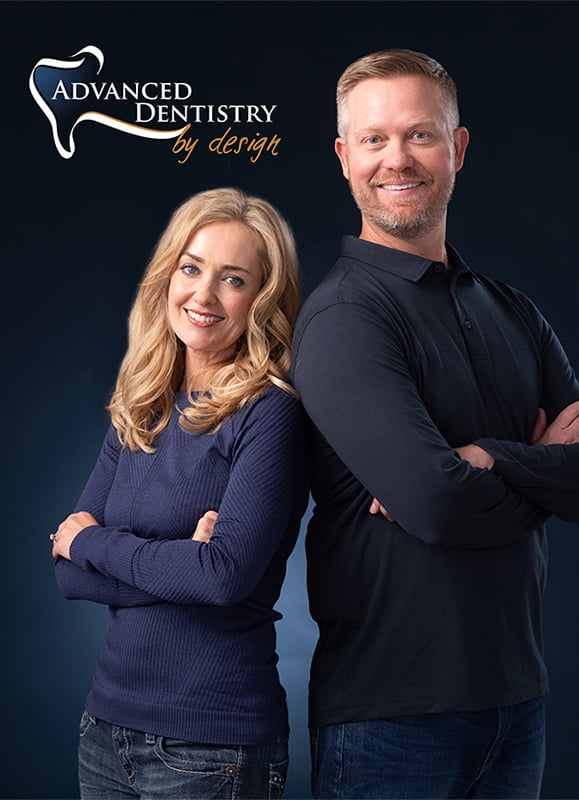Episode 135: Requested Replay: Enhancing Communication
“Nobody wants dental treatment. But here’s what we all want: we all want solutions to the problems that we know we have.” ~ Dr. Chris Bowman
In this episode of Investment Grade Practices Podcast, your host Dr. Victoria Peterson is joined by Dr. Christopher Bowman of Advanced Dentistry of Charlotte (Charlotte, NC). With decades of experience between them, Dr. Peterson and Dr. Bowman discuss effective communication as a cornerstone for developing an Investment Grade Practice.
You will be treated to a comprehensive exploration of communication and marketing as Dr. Bowman underscores the importance of leveraging both verbal and nonverbal aspects of communication to positively influence patient behavior. From defining the elusive “yes” from patients to navigating obstacles with your dental practice, you will learn practical strategies for establishing strong patient relationships and fostering trust through effective communication.
This conversation also covers the nuances of patient-centered care, and the importance of aligning treatment recommendations with patient goals. Mastering communication can transform your dental practice into a thriving, patient-centric institution.
As you immerse yourself in this episode, consider these key reflections:
- What insights from this episode can you apply to your own practice to enhance communication amongst your team?
- How else can you emphasize your patient goals in communication, and how can you best align treatment recommendations with patient desires?
- What obstacles are there in your practice in regard to communication, and what can you do to overcome them?
- What communication strategies can you implement to ensure long-term success in your practice?
EPISODE TRANSCRIPT
Dr. Chris Bowman
If you think about it, nobody wants dental treatment. Really, even even dentist. dentists don’t want dental treatment but here’s what we all want. We all want solutions to the problems that we know that we have. So if we don’t want dentistry, then why do we spend so much time on the front end trying to gain acceptance of treatment? Why do we talk about treatment so much so early? Instead, we should be really good at presenting problems and conditions.
Announcer
Welcome to the Investment Grade Practices Podcast where we believe private practice dentists deserve to get the lifestyle today while building an asset for tomorrow. Join your host, Victoria Peterson, who designed the practice of your dreams and secure your financial independence. Let’s get started.
Victoria Peterson
Welcome, everyone, today is a special treat. I have one of my really great industry friends, Dr. Chris Bowman here with me today. Chris and I have known each other several decades, I would ages both But I do believe that we first met around 1999 at the turn of the century and it’s so great to be with you today, Dr. Bowman, and catch up and see how you’re influencing dentistry today. So welcome to Investment Grade Practices.
Dr. Chris Bowman
Thanks so much, Vicki. I always love seeing you and I’m really happy to be here and honored to be here today.
Victoria Peterson
Well, we’re gonna jump right into it. You are a master communicator, you always have been you studied it for decades. I think that’s one of the things you and I had in common and that’s the topic I want to bring forward. How does communication help you build an Investment Grade Practice, one that’s predictable and durable? And I know you’ve got a master class teaching communication skills is a marketing tool really to help patients get to yes. So let’s talk, when you say communication, how do you define that?
Dr. Chris Bowman
Yeah, that’s a great question and if I may, I’m gonna, I’ll define communication, then I’ll also define marketing, and then hopefully tie those together.
Victoria Peterson
Perfect.
Dr. Chris Bowman
Yeah, so communication is really anything that anyone does in a business that makes an impression on another person in that business. So it could be verbal, of course, and it could be nonverbal. Many of us have have seen the statistics that over 90% of communication is nonverbal, when I would say over 90% of the training and communication is nonverbal. So there’s a lot left on the table there, when you when you fail to consider the nonverbal aspects of communication. So communication is really anything that you do in a business, or personally, when you interact with someone else. That’s, that’s communication. I like to couple that with marketing. My definition of marketing is a lot more broad than most people would anticipate. It’s very similar sounding, to the communication definition. In my view, marketing is anything that anyone in a business does that influence is a potential client, existing client to do more or less business with them. So it could be anything that they do and an example might be a waiter at a restaurant. You know, if a waiter is having a really good day offering really good service, that’s obviously going to be good marketing, because it’s going to make a great impression and you’re going to make a decision to do more business with that. So anything that influences someone to do more or less business with your business is marketing. So when you put those two together,
Victoria Peterson
I’m sorry, go ahead.
Dr. Chris Bowman
Oh, it’s okay. When you put those two things together, you can actually structure your communication systems in a business, too. would effectively be a marketing system because you can you can develop communication systems that will literally influence your potential and existing patients, clients, customers, to hopefully do more business with you, based on how you interact with them.
Victoria Peterson
I love that. I love that you’re taking me back to Fred Joel’s first book, “Everything is Marketing.” Yeah. Color on your wall, the sign that says, “Welcome”, everything. I love that. So how do you tie that, together with patients saying yes, in fact, what is yes?
Dr. Chris Bowman
Oh, that’s a good question. Yeah. You know, yes, obviously, is the decision to move forward and, and the decision to, to maintain that initial commitment. If someone comes into your practice, they’re making an initial commitment to, to at least try you out and when you can start to build that relationship as early as the first point of contact with a potential new patient and then really nurture and develop that process throughout the new patient appointment and so on, you can, you can build that relationship to a point where patients are going to be more likely to continue that commitment, and to move forward and that always happens with a yes. So from the, from the first point of contact, my goal in working with dental practices is to help them to establish and develop what I call the patient relationship development process, to really begin strong with a strong new patient phone call, and even do some things between the new patient phone call and the new patient appointment, assuming they’ve scheduled to increase the odds, they show up, and they just every step of that process, you’re continuing to build the relationship, you’re continuing to build the trust and when you build the relationship in the trust you build influence and as long as the influence is consistent with what’s in the best interest of each patient, that’s, of course, what makes an ethical. You’re able to ethically influence patients to move forward with ultimately your treatment recommendations. There’s a lot more involved in that but, but that’s ultimately, in my view, what leads to yes.
Victoria Peterson
I love that and what are the obstacles that keep patients? I mean, time and money for sure but what are the obstacles within the practice that put up roadblocks?
Dr. Chris Bowman
Yeah, that’s a really good question because most doctors and team members think about the obstacles that the patients may have, and the first three that come to mind, in most cases are time, money, and fear. There is one by the way, that, that beats all three of those combined and I’ll get to that in a minute but within the practice, you know, I think, for a lot of us, and for me back in back in the older days, in my practice, the biggest impediment for me to get yeses from my patients was that I wasn’t doing it the right way. I wasn’t communicating with my patients in a way that resonated with them. I was communicating in a way that resonated with me, a dentist, and I wasn’t really connecting with them on a personal level. I wasn’t really addressing what their goals and concerns were and I wasn’t tying my treatment recommendations back to their goals and to their concerns and that’s one of the one of the big secrets. Once you can identify what your patient’s goals are and once you can identify what they really want, you know, that’s classic Zig Ziglar.
Victoria Peterson
Right
Dr. Chris Bowman
Then you can start to tie your recommendations back to those goals and back to those wants, so that it really makes sense for patients to move forward with recommendations. So within a dental practice, if you think about the way that most dentists were trained to dental school. I mean, even today, I’ve heard a lot of younger dentists say, you know, they tell us to tell patients what they need and, and that, to me, is is probably one of the worst ways to present dentistry to patients because it does some things that are, that are quite frankly, wrong. Number one is it assumes the value system of the patient and when ,when you, when you’re telling someone, you need this. If you’re a dentist, you’re saying you need this, what you’re really saying is, these are my values and based on what my values are, I think you need this, and that a lot of times that happens before a patient is even asked what they want. So who are we to determine what someone needs without asking what they want? So I think that’s one of the biggest disconnects that we see. So, in my training, one of the things I emphasize is that we shouldn’t really begin any sentences with the words you need. Like you need this, you need that. Matter of fact, I say needs a four-letter word in dentistry. The only way that we could use the word need is if we use it in conjunction with something that the patient says that they want. So, in other words, if a patient says, you know, “I want to be out of pain right now, and they have an abscess tooth,” I’d say, “Okay, well, if you want to be out of pain, right now, then what we’ll need to do is this,” and that’s the only time I might use the word need in my practice. So again, that, that disconnect, between the way we were trained in dental school, and even the way some dentists are trained after dental school, and the way that I believe things should be presented to patients, that seems to be the biggest impediment and another impediment is the, I call it the monkey see monkey do training technique, which is, you get new team members that are practice, or maybe even new doctors into practice and there’s no formal training and communication. The training basically consists of okay, let’s say it’s a front office person, “Okay, watch her and do what she does.” Monkey see, monkey do. You get a new assistant, who’s in the practice, “Okay, here’s the lead assistant who’s been here for 15 years, do what she does, she’s going to train you,” and there’s no formal communication, training and most practices. Same thing with a hygienist. I mean, I remember in dental school, I learned my initial communication skills by listening to what the upperclassmen said, in dental school and only later, in my own practice, when I realized that patients can actually say, “No,” I realized that what I learned wasn’t working. And that’s kind of what set me on this big quest to, to solve the puzzle.
Victoria Peterson
And so are your, your systems getting patients to say yes to something or to comprehensive care? What is the pathway that they, that, where did these communication skills take the patient?
Dr. Chris Bowman
Yeah, so one of the things I cover in my training is what I call the spectrum of, of philosophy of care, and also the spectrum of patient compliance. So I use this imaginary line that would go from say, your far left to your far right and on the far left would be a dental philosophy that a dentist might have that hopefully, no dentist has where, where they don’t really recommend doing any dentistry, they wait till the very last minute. They say everything looks fine, even though things don’t look fine and, and they don’t really recommend any dental care and if they do, it may not be the best dental care, and on the other end of the spectrum, is the dentist who always recommends ideal dentistry every single time, no matter what whether the patient says yes or no. One of the things I like to say is you want to give every patient the opportunity to say yes or no to your best care and, and that philosophy is the philosophy that that I have and now that can’t come though without the proper amount of information. So if you imagine that spectrum of presenting ideal dentistry every time to the dentist, probably a fictional dentist that would never present ideal dentistry ever and then on top of that, if you lay another line, that would be what I call the spectrum of patient compliance. Now this will be on the far left again, we’ll be the patient who never really goes to the dentist never really does any dental work unless it’s the very last minute, and it’s a desperate emergency and then on the other end of the spectrum, is the rare patient who, who always does everything that’s recommended, ideally, every single time they show up early for their appointments, and they bring cookies.
Dr. Chris Bowman
That’s, you know, that’s always say, in every practice, there’s a Betty and in our practice, we’ve had a Betty, and Betty brings cookies, and she’s early, and she always does the recommended dental care and what you want to do is you want to move more of your patients toward that side of the spectrum and the way you do that is, again, by starting with what’s important to them and what they want. And then when you’re going through your diagnostic protocols and your findings, you describe the findings to the patients in a way that ties it back to their goals. So an example would be if, if you tell me that you want to keep your teeth the rest of your life and you want to have optimal dental health and I find some old, let’s say some old fillings or old crowns that have decay underneath them. I would say “Vicki, you know, I see some things here that aren’t going in the direction that you said you wanted your health ago. Let me show you what these are,” and another big point of emphasis is that if you think about it, nobody wants dental treatment.
Victoria Peterson
Right?
Dr. Chris Bowman
I mean, really even, even dentist, dentists don’t want dental treatment but here’s what we all want. We all want solutions to the problems that we know that we have. So, if we don’t want dentistry, then why do we spend so much time on the front end trying to gain acceptance of treatment? Why do we talk about treatments so much, so early? Instead, we should be really good at presenting problems and conditions,
Victoria Peterson
There you go
Dr. Chris Bowman
Because that’s what patients want the solutions for and once we get good at presenting problems and solutions to patients, and then tying it back to their goals, like I said, then patients begin to be interested in having those problems solved. So that’s when we can start to open a discussion about treatment. I believe that most training in this arena begins way too early with the discussion of treatment and, and the, you know, the benefits of the treatment, and the value of the treatment and all that’s great, but I think that that should wait a little bit until we have a really thorough discussion of the problems and conditions that we see and I’ve got a whole system for doing that.
Victoria Peterson
I love it and that was gonna be my final question is how do you make this durable? It all sounds great. I go to a class, I do it for a month or two, and then I get a new employee and they don’t do it and we didn’t send them to the training and it starts to fade again. So how do you make communication a system that’s durable? Yeah,
Dr. Chris Bowman
Yeah that’s, that’s another great question and I got a couple different answers for that one. The first way to do it is to start with the most important elements first, and then build on it. So when, when we do the training, we start with the beginning, it goes in chronological order, for example, what we would all call the new patient phone call that I call the potential new patient phone call, they are not patient yet, following that up with the steps to get them into the office once they’ve scheduled, and then what I call the new patient connection interview. To me, that’s the most important thing that’s done in the practice with a new patient. It’s one of the very first things that a team member does with a patient is identify again, what’s important to that person, what, what are they looking for, what are their goals for their health, for their smile, what do they see as potential obstacles and, and what’s important to them? What do they want? Once we have that information, that’s gold and then we can use that information when we do our findings and again, tie that back, like I said earlier. So as far as how this is maintained and sustained at a dental practice, using that new buzzword sustainability?
Victoria Peterson
Is that a buzz word?
Dr. Chris Bowman
Yeah, I think it is nowadays. How do you make this sustainable in your practice? You, You begin to lay these layers in. With team meetings, you say, “Okay, we’re going to get this new patient phone call down, we’re going to get the new patient interview down,” and now we’re going to start layering in new elements and your question about new team members, you know, what if you have a team member that moves away, and you have to hire someone new, one really cool thing that is developing right now, within the next few weeks, I’ll be launching the getting , masterclass online, which is a complete video recording of an entire live course. So that’s going to be launched very soon and doctors that participate in the live training will be able to get access to the online video training and of course, doctors that want to access the video, online training can do that as well. So there’ll be different options for doctors depending on the level of involvement that they want but that’s my main goal is to make it something that’s a continuous journey, as opposed to just a two-day course. One of the things I say a lot with a, we’ve got a 50-page manual that comes with the course and one of the things I say to the doctors is “Don’t put it where all the other ones are. You want to put it in a place where you’re gonna reach for it on a routine basis.”
Victoria Peterson
There you go. I love it. Well, Chris, you have always been an advocate of patient care of opening up access, and I think you’re hitting on a really important topic that doctors are really overwhelmed with patients right now and and many are looking to get out of the, what they termed the PPO trap but even with good communication skills, patients understand that as a beneficiary thing to help them with part of their treatment, maybe not all their treatment, it all comes back to the communication skill. So thank you for tackling this really, really important problem for making this something that can become a durable system in your practice. I think predictability is one of the things that lowers practitioner stress, more than anything, so it’s good for the patient and it’s good for the practice. We’ll be sure to put your cell phone number and your email address into the show notes so people can contact you along with the website, gettingpatientstoyes.com so that they can reach out and find out more. Is there anything you’d like to leave our listeners with today?
Dr. Chris Bowman
You know, I would like to say that, that the, the process of moving patients through your practice and again, that patient relationship development process, it doesn’t have to be stressful and it doesn’t have to be confusing and it can be systematized and a lot of people don’t think about communications is something that you can make into a system and when it ends up creating the results that you want in your practice, it literally becomes a marketing system. So that’s my goal for each practice that participates, and that’s something that I believe we’re accomplishing today.
Victoria Peterson
Oh, that’s fantastic. Well, thank you so much for being here. today. We look forward to great things to come from you.
Announcer
Thank you for tuning in to this episode of the Investment Grade Practices Podcast. If you find value in this episode, help us spread the word by passing it along to a dental friend, subscribe and give us a Like on iTunes or Spotify. Learn more about building your Investment Grade Practice at productivedentist.com today
Have a great experience with PDA recently?
Download PDA Doctor Case Studies
